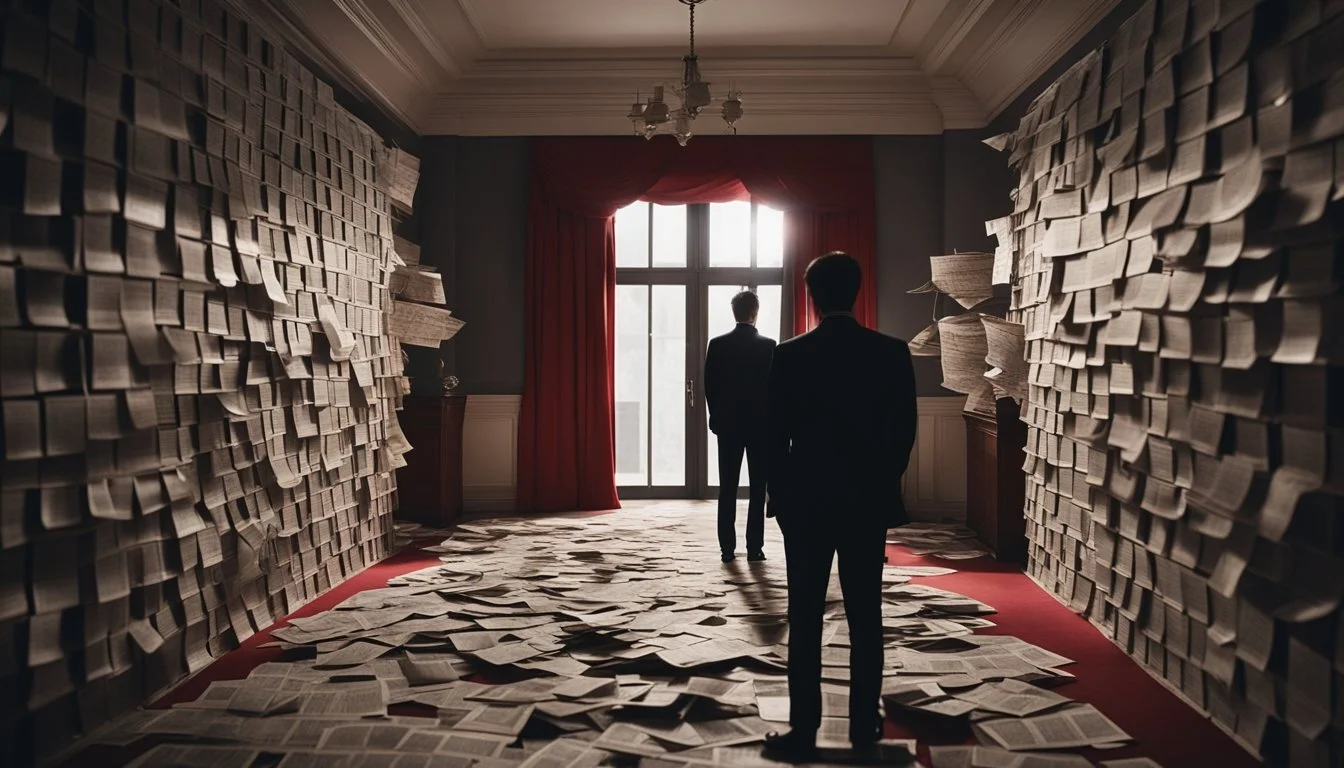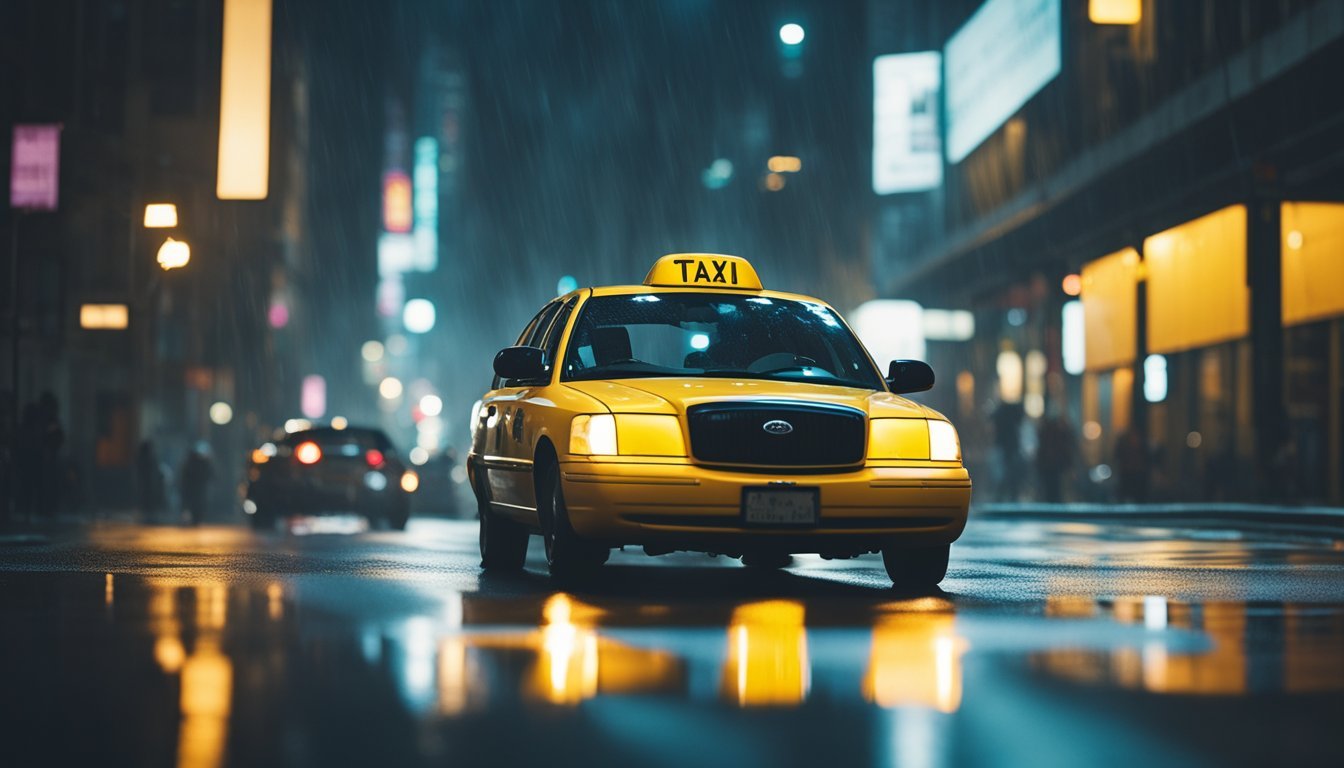5 Films That Explore the Psychological Impact of Paranoia
Unveiling the Human Mind
Paranoia, in its intricacies, has captivated filmmakers and audiences alike, driving narratives that venture into the unsettling territories of the human mind. Through cinema’s lens, viewers are offered a glimpse into how paranoia can distort reality, creating a sense of tension and mistrust that affects both characters within the story and those watching. Exploring the psychological impact of paranoia in films allows audiences to examine the complexity of fear and uncertainty.
These films do more than entertain; they explore the depths of human emotion and psychological tension. By immersing viewers into worlds filled with suspicion and unease, cinema becomes a powerful medium for understanding the effects of paranoia on individuals and relationships. Films that delve into these themes not only reflect these intense states of mind but also pose existential questions about reality and self-identity.
1) The Conversation (1974)
Francis Ford Coppola crafted a masterpiece in the psychological thriller genre with The Conversation. Released in 1974, this film delves into the realm of paranoia and surveillance. Gene Hackman portrays Harry Caul, a solitary surveillance expert, whose professional skills lead him into a web of uncertainty.
Caul's obsession with sound and privacy becomes central as he tapes a conversation between a couple. The more he listens, the more he suspects something sinister. This increasing paranoia drives the film’s tension as Caul questions the ethics and consequences of his work.
The film reflects the era’s pervasive sense of mistrust, particularly poignant in the post-Watergate context. It resonates with audiences concerned about privacy and the ethics of surveillance. Its chilling narrative and thought-provoking themes earned it critical acclaim, including the Palme d'Or at the Cannes Film Festival.
Coppola's direction, combined with minimalist sound design and Hackman's compelling performance, makes The Conversation an enduring classic that explores the dark side of technology and privacy. The film's cultural and historical significance led to its preservation in the National Film Registry. For more information, check this Wikipedia article.
2) Taxi Driver (1976)
"Taxi Driver," directed by Martin Scorsese, is a compelling exploration of urban alienation and the psychological decline of its protagonist, Travis Bickle. Set in New York City, the film follows Bickle, a lonely, socially isolated taxi driver and Vietnam War veteran.
His increasing paranoia and disillusionment are mirrored through the film's gritty portrayal of the city and its underbelly.
Through its intense character study, the film effectively depicts Travis's descent into madness. His experiences driving through the city's nightlife amplify his feelings of loneliness and disconnection from society. Witnessing crime and immorality around him fuels his growing obsession with cleaning up the city.
The film's visual style, characterized by shadowy cinematography and an evocative color palette, heightens the sense of paranoia. The city is portrayed as a chaotic and hostile environment, augmenting Travis's detachment and volatile mental state.
Scorsese's direction and Robert De Niro's iconic performance vividly bring to life the internal struggle between societal constraints and personal rage from within Travis.
3) Enemy (2013)
Enemy, directed by Denis Villeneuve, explores the psychological impact of paranoia through a narrative centered around a doppelgänger. Jake Gyllenhaal stars as a university professor who finds his life unraveling after he discovers a man, who looks identical to him, living in the same city.
Villeneuve crafts a tense atmosphere that captures the protagonist's growing anxiety and confusion. The doppelgänger narrative serves as a metaphor for internal conflict and the fear of losing control over one's identity. This dual role played exceptionally by Gyllenhaal highlights the eerie blend of reality and imagination.
The film’s visual style and sound design enhance the sense of unease, contributing to the audience’s experience of paranoia alongside the protagonist. Villeneuve's direction draws inspiration from masters such as Stanley Kubrick, creating an experience that invites viewers to engage with the psychological depths of the story. This results in a film that not only entertains but also stimulates thought on the nature of fear and identity.
For more information, visit Enemy on IMDb.
4) Black Swan (2010)
"Black Swan," directed by Darren Aronofsky, is a captivating psychological thriller that dives into the world of ballet with a focus on obsession and paranoia. The film follows Nina Sayers, played by Natalie Portman, a dedicated ballerina aiming for perfection in her role as the Swan Queen.
Her journey into the character leads to a nightmarish exploration of her own psyche. The intense pressure to excel and the fierce competition push Nina into a spiral of paranoia and hallucinations. Her struggle to embody both the innocent White Swan and the seductive Black Swan creates tension that permeates her personal and professional life.
The film is highly regarded for its portrayal of mental health issues related to artistic pressure. Its exploration of the darker aspects of performance anxiety and the cost of ambition resonate with audiences, offering a chilling look at the demands of perfectionism.
"Black Swan" brilliantly uses cinematography to mirror Nina's distorted reality, blurring the line between fantasy and reality. It stands as a profound meditation on how art can consume an individual.
For more information, visit IMDB.
5) Shutter Island (2010)
Martin Scorsese's "Shutter Island" (2010) delves into the dark corners of the human mind, presenting an intricate exploration of paranoia and mental instability. The film, based on Dennis Lehane's novel, is set in a psychiatric facility on a remote island, where the protagonist, Teddy Daniels, investigates the disappearance of a patient.
The plot embodies psychological tension, as Teddy encounters disturbing visions and mysterious clues. Throughout the narrative, viewers are drawn into Teddy's growing paranoia, experiencing disorientation akin to his own.
Scorsese masterfully blends suspense and psychological depth, inviting audiences to question the nature of reality and delusion. The film's atmosphere enhances the theme of paranoia, serving as a compelling study of the protagonist's mental struggles.
"Shutter Island" has significantly impacted the cinematic portrayal of psychological themes. Its nuanced depiction encourages discussions on mental health and the complexities of the human psyche, making it a poignant addition to the psychological thriller genre.
For more information, visit the IMDB page or the Wikipedia page.
Understanding Paranoia
Paranoia is a complex psychological state characterized by intense feelings of mistrust and suspicion. It can significantly affect an individual's perception and behavior, leading to various emotional and social challenges.
Definition and Characteristics
Paranoia involves a deep mistrust of others, often manifesting as unfounded beliefs that others intend to cause harm. These individuals might perceive threatening intentions in benign situations. It's important to note that paranoia varies in intensity; some experience mild suspicions, while others face severe delusional thoughts.
This state is not limited to any particular demographic and can be influenced by various factors, including trauma, stress, or substance abuse. Understanding paranoia requires recognizing its persistent and irrational nature, distinguishing it from momentary skepticism or situational anxiety.
Psychological Effects of Paranoia
The psychological effects of paranoia can be profound, impacting emotional well-being and social interactions. Individuals may experience heightened anxiety, irritability, and feelings of isolation. Such effects can lead to difficulties in maintaining relationships, as trust becomes a significant barrier.
Paranoia often exacerbates existing mental health conditions, like depression and anxiety disorders, creating a challenging cycle. The persistent fear and suspicion can result in stress-related physical symptoms, such as insomnia or fatigue. Recognizing these effects is crucial for identifying and supporting those affected by paranoia, promoting pathways to effective treatment and management.
Cinematic Techniques in Paranoia-Themed Films
Filmmakers employ various cinematic techniques to effectively convey the psychological complexities of paranoia. These techniques often include the strategic use of suspense and tension, as well as a dynamic approach to sound and music.
Use of Suspense and Tension
In paranoia-themed films, suspense often plays a critical role in engaging the audience emotionally. Directors frequently manipulate pacing to heighten tension, using quick cuts to unsettle viewers or slow scenes to build anticipation. Mise-en-scène elements like lighting and shadows accentuate feelings of uncertainty, guiding the viewers' focus toward unsettling details.
Close-ups are commonly used to capture the characters' emotional responses, revealing subtle signs of anxiety or dread. The combination of these visual strategies aims to immerse the viewer deeply into the characters’ psychological struggles, maintaining suspense throughout the narrative.
The Role of Sound and Music
Sound design greatly contributes to the atmosphere in films dealing with paranoia. Directors often use dissonant or eerie sounds to create an unsettling mood, reinforcing the sense of threat that characters experience.
Music may alternate between sharp crescendoes during moments of tension and silence or low ambient noise in quieter scenes, keeping audiences on edge. These auditory elements focus the viewer’s attention on the story's psychological undercurrents, enhancing the overall atmosphere of paranoia. Sound cues also guide audience reactions, providing audio hints that something ominous is about to occur, thus keeping tension palpable throughout the film.


